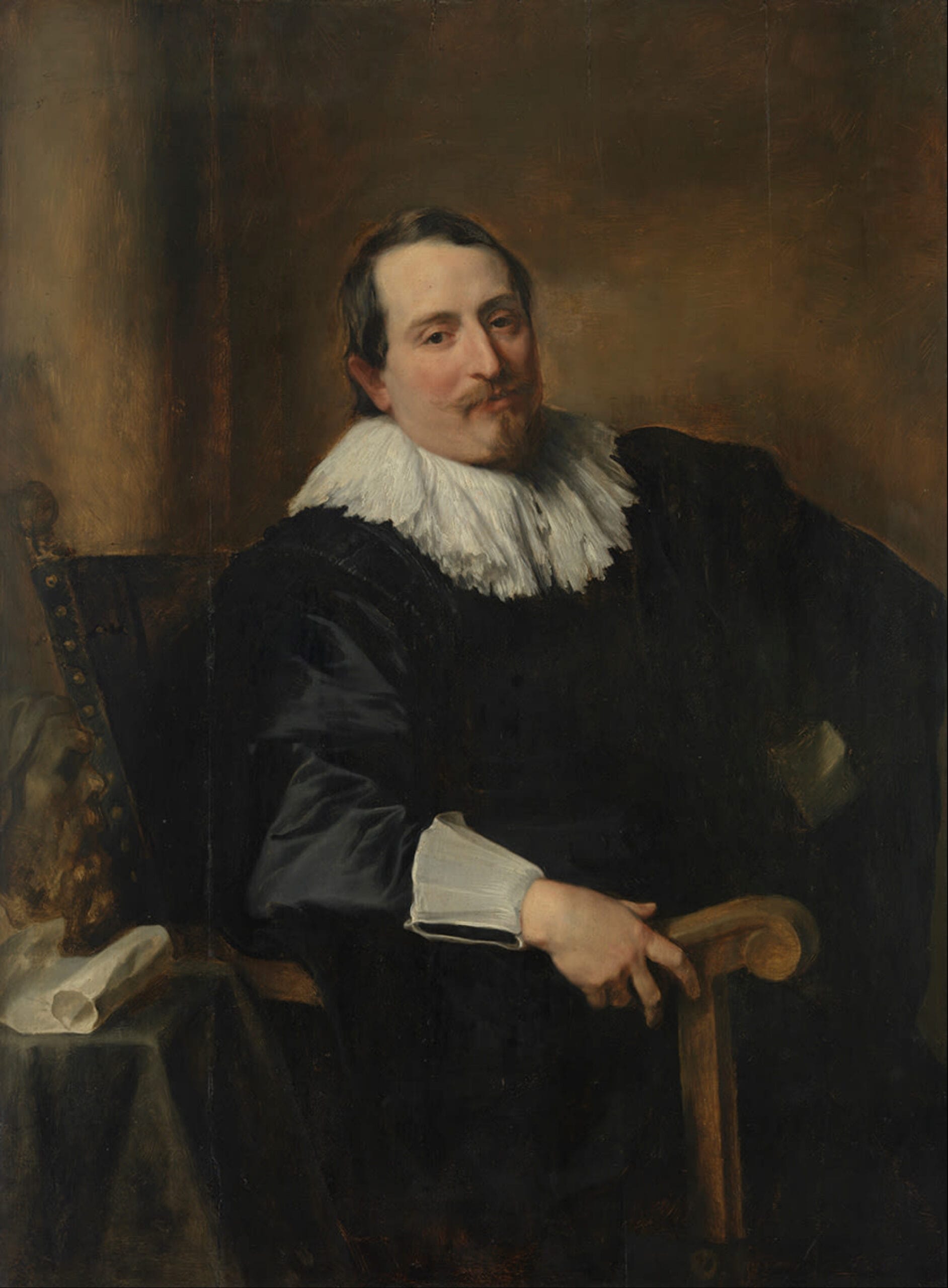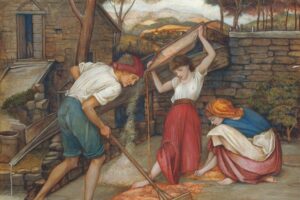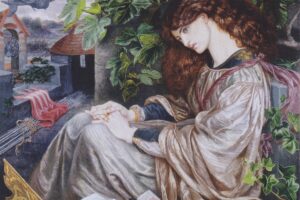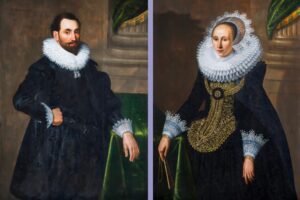The Quack Tooth Puller – Theodoor Rombouts, (1620–1625)
In a crowded room, somewhere in a bustling village square, laughter, fear, and spectacle collide. Baroque painter Rombouts captures a scene both humorous and mildly horrifying in The Quack Tooth Puller. Painted in dramatic and expressive style, the work offers a lively commentary on human gullibility, bravado, and the timeless art of deception.
The Scene Before Us
At the heart of the scene, an extravagant figure—part dentist, part performer—dramatically extracts a tooth from a helpless young man. The patient grimaces, his body tense, hand raised in an appeal for mercy, while the self-assured tooth-puller calmly continues, his confident smile untouched by his patient’s agony.
Surrounding them are villagers, richly characterized by Rombouts lively brushwork. Some gasp with fascination, others chuckle with detached amusement, while a few whisper knowingly, skeptical of the drama unfolding. The table nearby, cluttered with ominous-looking dental tools and strange medicinal jars, hints at both expertise and charlatanism.
Rombouts captures not just a tooth extraction but a small theater of village life—a show performed as much for entertainment as for healing.
The Deeper Meaning
Though comedic on its surface, the painting is also a gentle satire of human nature. It pokes fun at the eternal human tendency to trust flamboyance over skill, style over substance. The “quack” in the title is no mere insult—it’s a wry acknowledgment of the thin line between confidence and competence, truth and performance.
Through exaggerated expressions and animated gestures, Rombouts invites us to laugh—but also reflect. The tooth-puller symbolizes every charismatic figure who promises miracles with theatrics rather than truth, exploiting vulnerability and ignorance to applause and profit.
The villagers—fascinated yet skeptical—represent our own complicated relationship with spectacle and authority. We love the show, we laugh, we cheer, yet beneath it all is the quiet, uneasy suspicion that we’ve just been fooled.
A Dentist or a Hunter?
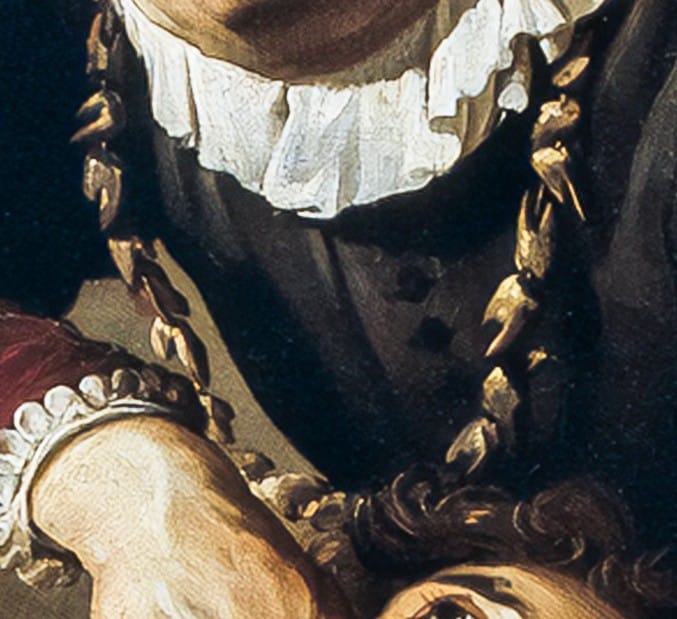
Gazing at this scene, one might wonder if we’re witnessing a medical procedure or a primal hunt. The central figure, with his theatrical grip and the patient’s anguished contortion, certainly possesses the intensity of a seasoned hunter. And why not? Imagine, if you will, the “tooth-puller” proudly displaying his track record not on a curriculum vitae, but around his neck!
Forget academic degrees and glowing patient testimonials. This man’s credentials might just be a grotesque, clattering necklace fashioned from the very teeth he’s extracted – a macabre testament to his strength and courage. Each discolored molar, each jagged canine, a trophy marking a past “session.”
“Behold!” he might declare, gesturing grandly to his dental adornment. “This wisdom tooth? From a particularly stubborn merchant! And this incisor? A true battle, I tell you, from a baker who feared pain more than burnt bread!”
Much like a tribal warrior displaying a necklace of lion’s fangs to signify his prowess and bravery in the face of nature’s might, our dental protagonist showcases his victories over decay and discomfort. His “strength” isn’t in felling a beast, but in overpowering a persistent toothache. His “courage” isn’t in facing a charging lion, but in enduring the screams and flailing limbs of his patients.
So, is he a dentist, or a hunter of troublesome molars? Perhaps, in the dramatic theater of 17th-century dentistry, the two were delightfully, terrifyingly, intertwined. And his “necklace of previous sessions” would undoubtedly be the most convincing, albeit horrifying, advertisement for his services.
A Moment Caught in Time
Rombouts, ever the observer of everyday comedy, freezes this moment of folly and amusement forever. The canvas becomes a stage, the figures actors, the viewer part audience, part accomplice. We cringe at the patient’s pain, yet smile at the absurdity, the exaggeration, the timeless humanity of it all.
We might recognize our own susceptibility, our own delight in spectacle, our own eagerness to believe in easy answers and charismatic strangers. Rombouts reminds us, with laughter rather than scolding, to watch carefully, to enjoy the show, but perhaps hold onto our skepticism—lest we become the next willing victim of charm.
About Artist
Theodoor Rombouts (1597–1637) was a Flemish Baroque painter who is considered the most original and important representative of Flemish Caravaggism. His work stands out for its dramatic use of light and shadow, and its focus on vibrant, realistic genre scenes that often portray lively gatherings, musicians, and card players.
Life and Artistic Influences
Born in Antwerp, Rombouts received his early training under the master Abraham Janssens, one of the first Flemish painters to adopt a Caravaggio-influenced style. From 1616 to 1625, Rombouts lived and worked in Rome, where he was exposed to the revolutionary art of Caravaggio and his followers, particularly Bartolomeo Manfredi. This period was formative, shaping his signature style of using stark contrasts of light and shadow (tenebrism) and depicting half-length figures in theatrical compositions.
After his return to Antwerp in 1625, Rombouts became a master of the Guild of St. Luke. He continued to create his monumental genre paintings, but as the Caravaggist style waned, his later works adopted a lighter palette and more refined technique, reflecting the influence of other prominent Flemish painters like Peter Paul Rubens.
Artwork Profile
Rombouts’s best-known works are his large-scale genre paintings, which are filled with energy, narrative detail, and a sense of immediacy.
- The Card Players (c. 1625): This is one of Rombouts’s most celebrated and characteristic paintings. The scene, created shortly after his return from Italy, is a masterclass in tenebrism. A single light source illuminates a group of men gathered around a table, highlighting their expressions of concentration and deceit. The painting masterfully captures the drama and tension of a gambling game, all while hinting at the moralizing themes common in such works.
- The Quack Tooth Puller (c. 1620–1625): This painting, housed in the Prado Museum, is another prime example of Rombouts’s Caravaggesque style. It depicts a chaotic and lively street scene centered on a “quack” or charlatan tooth puller in the midst of his gruesome work. The crowd’s diverse expressions—ranging from pain and horror to curiosity and amusement—are captured with unflinching realism. The dramatic lighting, the detailed costumes, and the theatrical composition all serve to create a powerful and engaging narrative.
Rombouts’s work is a crucial link between the revolutionary Italian Baroque and the rich tradition of Flemish painting. His ability to blend Caravaggio’s dramatic lighting with a uniquely Flemish sense of realism and storytelling cemented his place as a leading figure of his generation.

